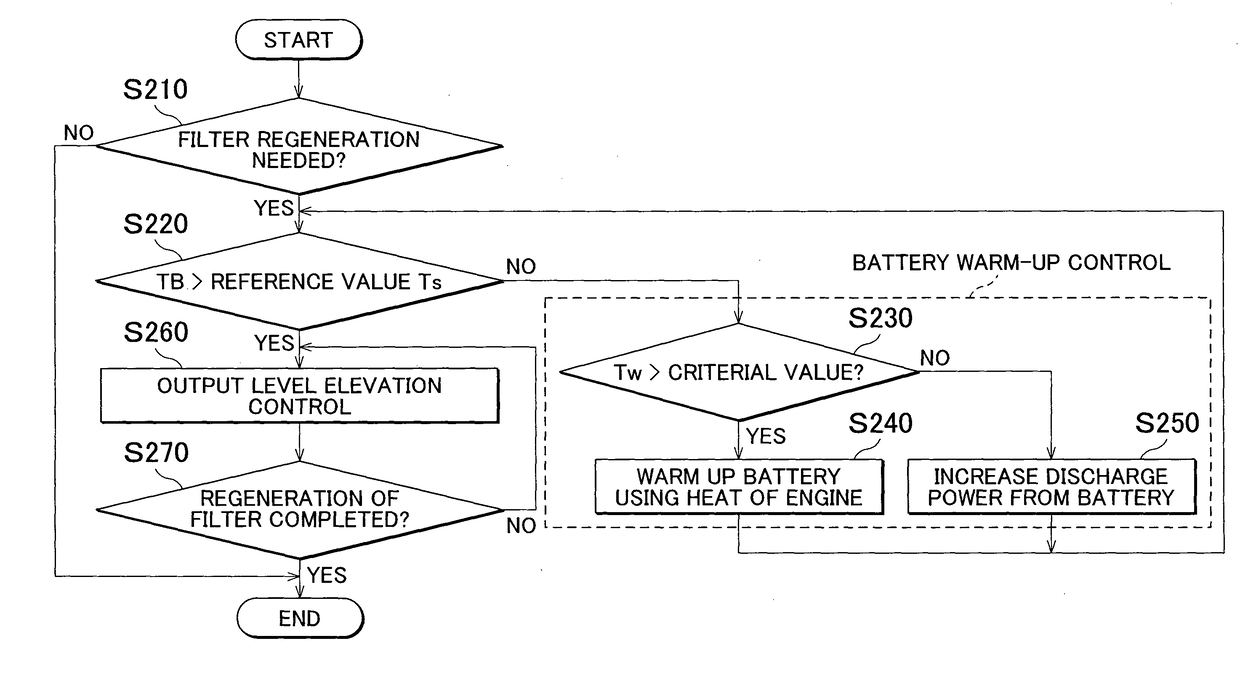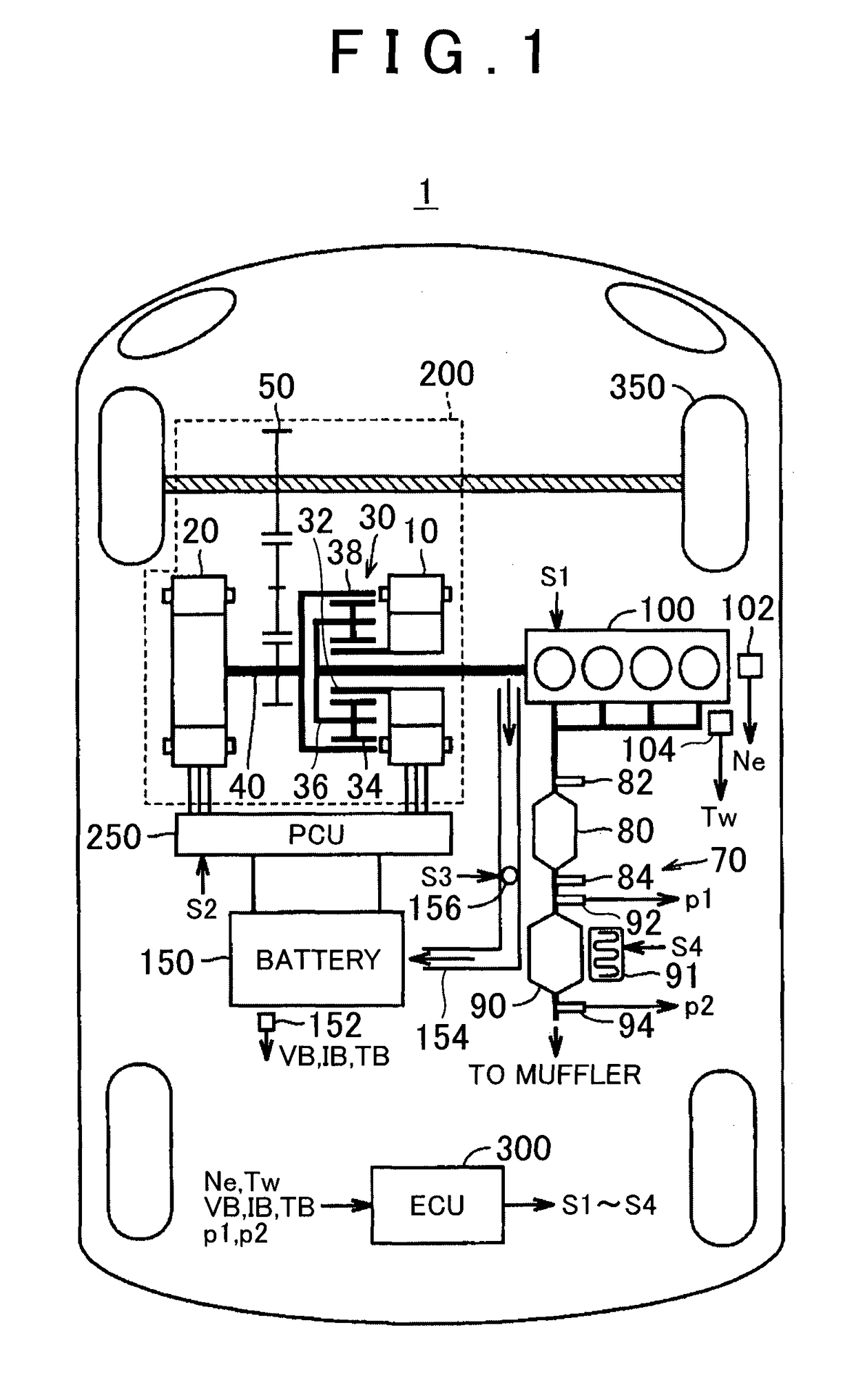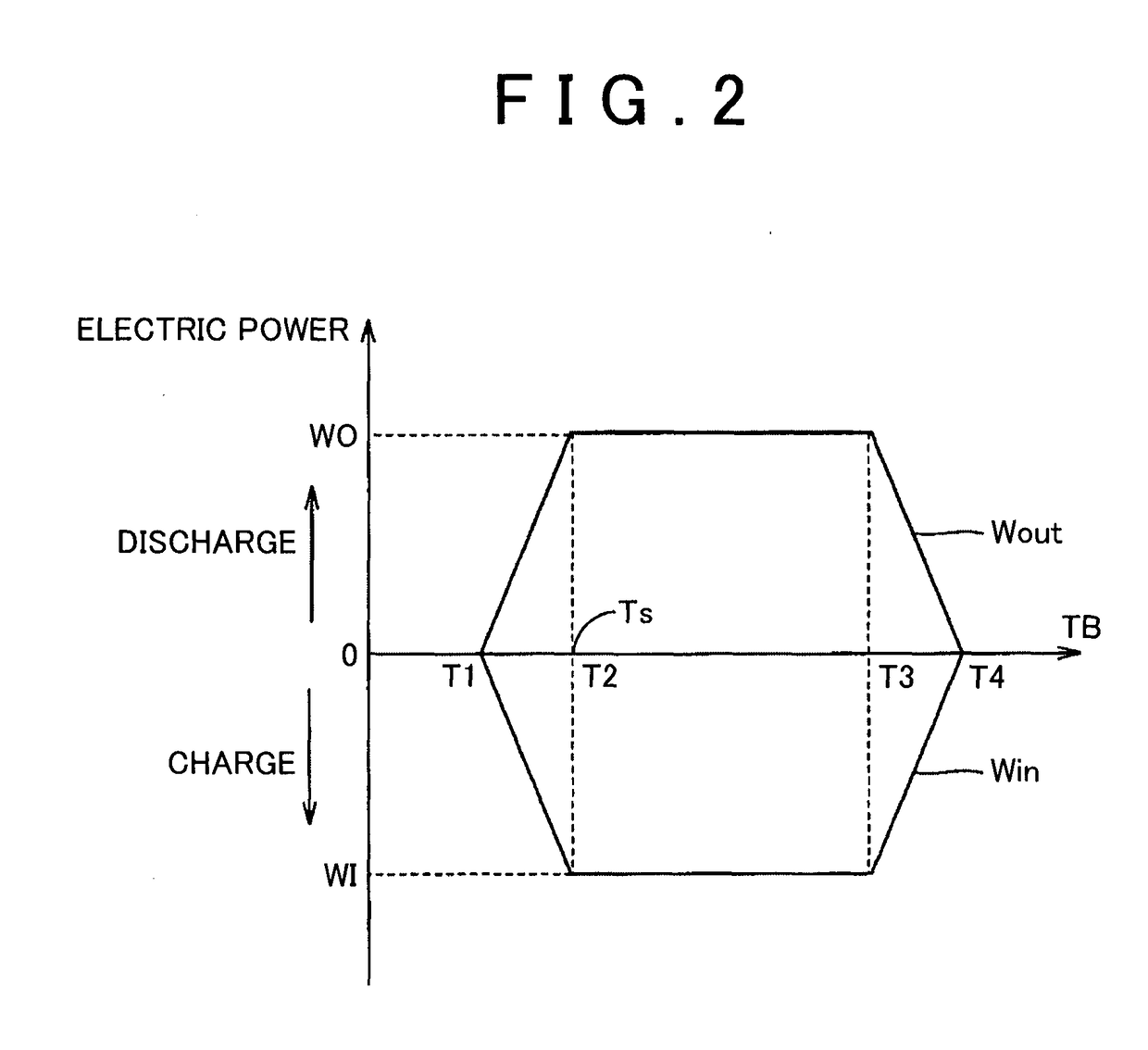Hybrid vehicle and method of controlling the same
- Summary
- Abstract
- Description
- Claims
- Application Information
AI Technical Summary
Benefits of technology
Problems solved by technology
Method used
Image
Examples
first embodiment
[0038]FIG. 1 is a block diagram schematically showing the configuration of a vehicle according to the invention. Referring to FIG. 1, the vehicle 1 is a hybrid vehicle. The vehicle 1 includes an engine 100, a battery 150, a transmission 200, a PCU (Power Control Unit) 250, an ECU (Electronic Control Unit) 300, and drive wheels 350.
[0039]The engine 100 (internal combustion engine) generates driving force for moving the vehicle 1, according to a control signal 51 from the ECU 300. In this embodiment, a gasoline engine is employed as the engine 100. However, the fuel of the engine 100 is not limited to gasoline, but may be light oil (diesel fuel), biofuel (such as ethanol), or gas fuel (such as propane gas), for example.
[0040]A crank position sensor 102 is provided at a position opposed to a crankshaft (not shown) of the engine 100. The crank position sensor 102 detects the rotational speed Ne of the engine 100 (which will also be called “engine speed”), and outputs the detection resul...
second embodiment
[0106]Thus, when the reference value Ts is set to a value different from the temperature T2, too, the battery can be warmed up until the GPF regeneration control becomes able to be carried out. Since a margin for the temperature T2 can be secured by warming up the battery to a temperature level higher than the temperature T2, the charge power or discharge power is less likely to be restricted even when the battery temperature TB is lowered during execution of the GPF regeneration control.
[0107]The temperature T2 is specified so as to protect the battery by restricting the charge power and the discharge power, and is a fixed value that is determined according to the specifications of the battery. On the other hand, the reference value Ts is specified so as to secure the charge power or discharge power needed for execution of the GPF regeneration control. Therefore, the reference value Ts can be changed according to a method of executing the GPF regeneration control (which (one) of t...
third embodiment
[0109]FIG. 9 is a timing chart useful for explaining the battery warm-up control according to the While the reference value Ts may be larger than the temperature T2 or smaller than the temperature T2, depending on the manner of setting the reference value Ts, the case where the reference value Ts is set to be smaller than the temperature T2 will be described in FIG. 9. Referring to FIG. 9, control before time t3 is substantially the same as control before time t3 in the timing chart shown in FIG. 3, and therefore, will not be repeatedly described.
[0110]At time t3a, the battery temperature TB exceeds the reference value Ts. This indicates that the battery 150 is warmed up to a battery temperature TB at which the GPF regeneration control can be performed. However, since the battery temperature TB is lower than the temperature T2, the charge power and discharge power of the battery 150 are restricted. Therefore, in this embodiment, the battery warm-up control is continued so that the ...
PUM
 Login to View More
Login to View More Abstract
Description
Claims
Application Information
 Login to View More
Login to View More - R&D
- Intellectual Property
- Life Sciences
- Materials
- Tech Scout
- Unparalleled Data Quality
- Higher Quality Content
- 60% Fewer Hallucinations
Browse by: Latest US Patents, China's latest patents, Technical Efficacy Thesaurus, Application Domain, Technology Topic, Popular Technical Reports.
© 2025 PatSnap. All rights reserved.Legal|Privacy policy|Modern Slavery Act Transparency Statement|Sitemap|About US| Contact US: help@patsnap.com



